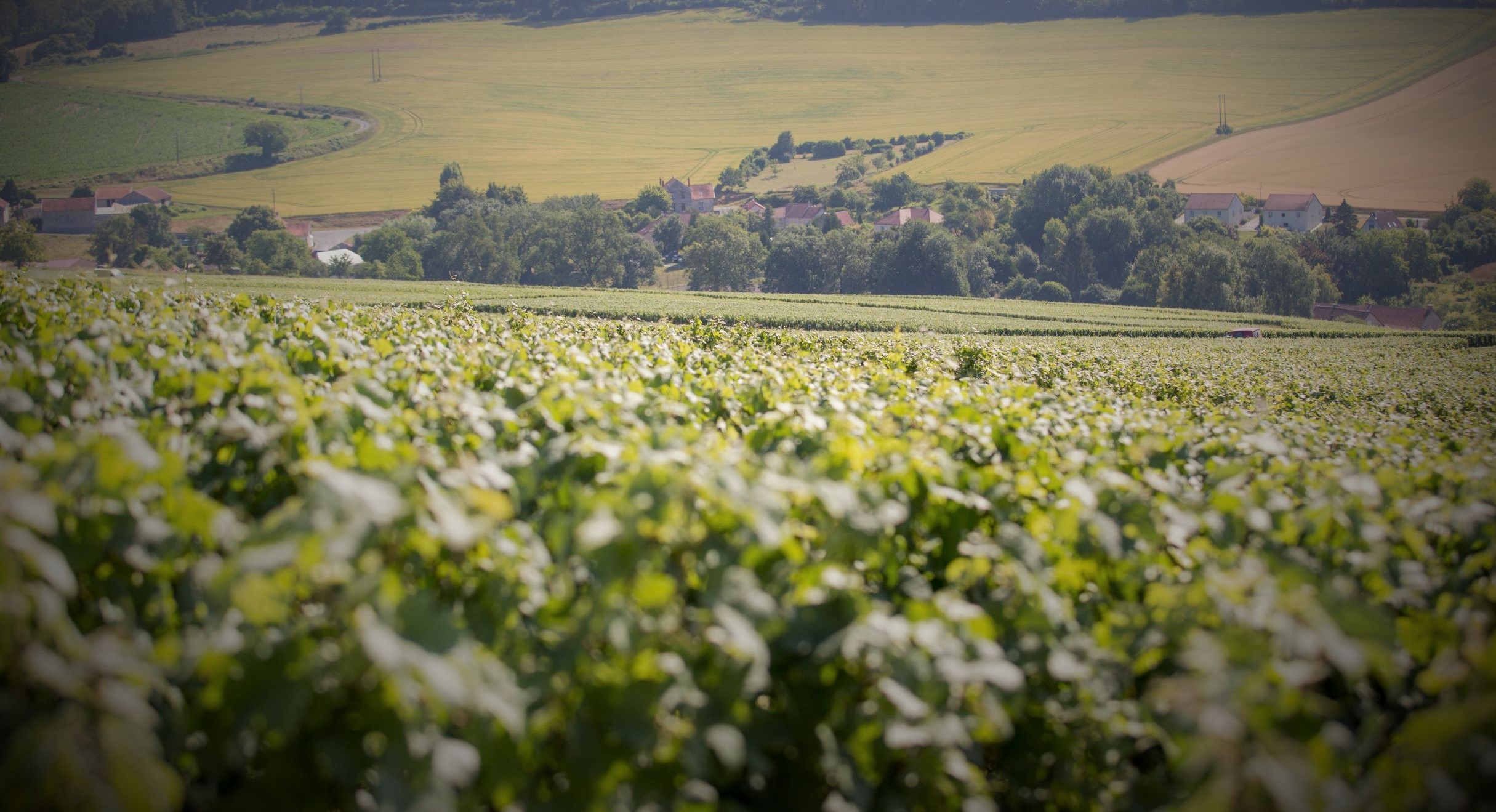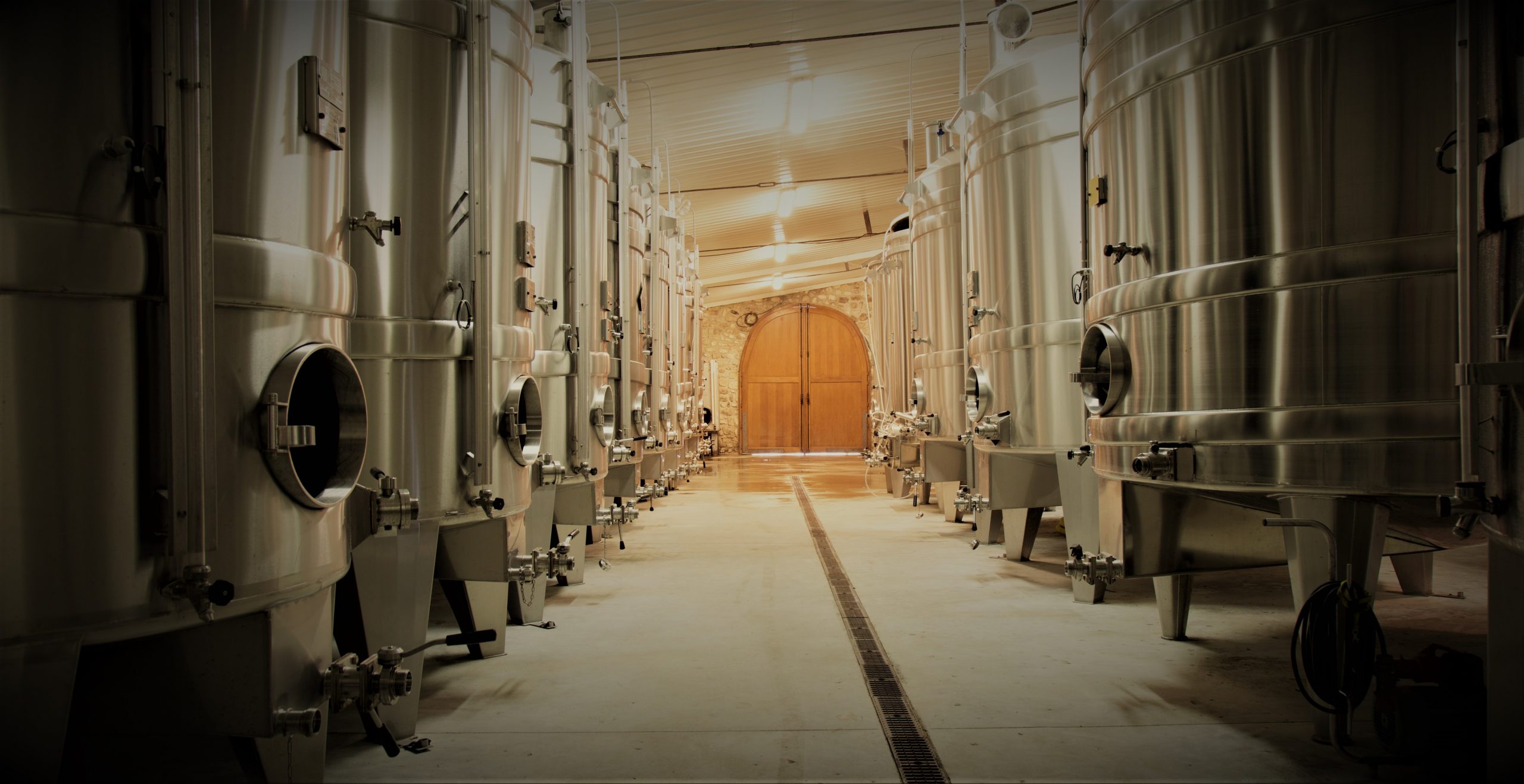
ANCESTRAL KNOW-HOW
———
WORKING THE VINEYARD
The vineyard requires work throughout the year, in order to obtain quality grapes for our champagnes.
Pruning
Running from November to the end of March, this is the most important step. It allows you to regulate production and avoids the vine becoming depleted. Pruning is regulated, only 4 pruning systems are allowed in Champagne: Chablis, Guyot, Cordon and Vallée de la Marne.
Tying and disbudding
From March to April, once the vines have been pruned, the wood is tied to a wire so that the vine grows in the desired direction. In mid-May, disbudding consists of removing all the buds that have grown on the old frame which can divert the sap of the main buds.
Lifting and trellising
At the end of May, the branches should be raised and held in an upright position, separated and held between two wires, 30 cm above the support wires. This gives the vineyard its unique design. Trellising takes place in June. It consists of aerating the foliage so that it takes in enough light.
Trimming
This is the summer pruning. It starts at the end of June and lasts until the harvest. It helps eliminate regrowth and promotes fruit production by giving the bunches the maximum amount of sunshine. Working the vine is always manual, apart from trimming and any potential treatments.

———notre cuverie au cœur du domaine familial
———
notre cuverie au cœur du domaine familial
———
notre cuverie au cœur du domaine familial
———
THE MAKING OF OUR CHAMPAGNE
Like a painter, who harmonises colours and shapes to make a work of art, we assemble our different wines to create a unique and inimitable nectar.

———fût de chêne dans notre cuverie
———
fût de chêne dans notre cuverie
———
fût de chêne dans notre cuverie
Harvesting and pressing
The harvest takes place between mid-September and early October. The dates are determined by the organisation, depending on the wine, in an effort to produce optimal quality. It is carried out manually and the grapes are taken as quickly as possible to the press to avoid any risk of oxidation.
Pressing is done slowly and gradually. The “musts” (the juice) are collected separately: the “cuvee” (first juice) then the “pruning” (the following juices). The grapes are pressed according to their grape variety and their hillside. This is what will give the wines their different characteristics and, in turn, expand the range of tastes in our wines.
Pressing is done slowly and gradually. The “musts” (the juice) are collected separately: the “cuvee” (first juice) then the “pruning” (the following juices). The grapes are pressed according to their grape variety and their hillside. This is what will give the wines their different characteristics and, in turn, expand the range of tastes in our wines.
Fermentation
The musts are placed in stainless steel vats or barrels and will undergo two fermentations processes:
1. Alcoholic fermentation:
The must is transformed into wine thanks to the yeasts which, by consuming the sugar, transform it into alcohol with a release of carbon dioxide. The latter will then be evacuated from the top of the tanks.
2. Malolactic fermentation:
Malic acid is converted into lactic acid by bacteria. This helps to soften the acidity of the wines.
1. Alcoholic fermentation:
The must is transformed into wine thanks to the yeasts which, by consuming the sugar, transform it into alcohol with a release of carbon dioxide. The latter will then be evacuated from the top of the tanks.
2. Malolactic fermentation:
Malic acid is converted into lactic acid by bacteria. This helps to soften the acidity of the wines.
Blending
This is the mixing of different “light wines”, from different grape varieties, vintage and aged. This is, on the one hand, what gives each champagne brand its unique character, and, on the other hand, enables them to maintain it year after year. Each year, part of the harvest is “reserved” and kept (between 2 and 3 years) to be blended with the wines from the last harvest. Vintage champagnes are single-crop blends and are made in good years. This work is performed by the winemaker or in the great house by the cellar master.
Racking
The wines, thus assembled, are bottled. The tirage liqueur (a mixture of old wine and sugar) and selected yeasts are added to create a new fermentation in the bottle. The bottles are closed with a plastic cover and covered with a metal cap. Once again, the yeasts consume the sugar and turn it into alcohol. The “foam creation” takes about eight weeks and is crucial for the quality of future Champagne. This is how the wine becomes sparkling and turns into Champagne!
Ripening
Once the foam had been made, the dead yeast forms a residue. The latter interacts with the wine and the natural oxidation that is created from contact with the outside. This will help improve the aromas of the champagne. It ensures a certain degree of quality that allows the champagne to keep its identity and stand out from other sparkling wines.
• 36 months of ripening after racking, including 30 on the lees. The legal minimum for a champagne is 15 months, but we prefer a longer aging, guarantying our wines a fullness.
• 96 months of maturing for our vintage champagnes while the legal minimum is 36 months.
• 36 months of ripening after racking, including 30 on the lees. The legal minimum for a champagne is 15 months, but we prefer a longer aging, guarantying our wines a fullness.
• 96 months of maturing for our vintage champagnes while the legal minimum is 36 months.
Riddling
When Champagne has reached maturity, it is stirred. This method, typical of the Champagne region, consists of lowering the residue in the lid of the neck of the bottle before expelling it. This technique has been used for centuries by winemakers. The bottles are rotated 90 degrees a day manually or automatically (in gyro-pallets), gradually straightening from horizontal to vertical. This operation takes one month if done by hand or 5 days if done by machine.
Disgorging
This is a crucial moment in the making of champagne. You have to open the bottle and expel the residue. After riddling, the bottle is placed head down and the neck is immersed in a solution at -25 ° C. The bottle is turned the right side up and the cap is removed. Under the effect of the pressure, the accumulation of sediments in the neck bottle, which is now frozen, is expelled.
Secondary fermentation
We then add the dosage liqueur. It finalises the taste and its concentration makes it possible to define the wine as Brut (dry) or Demi-Sec (half-dry). The bottle is then plugged by a cork the shape of which prevents the gas from escaping and is held by a metal wire. The aging time of our cuvées being higher than normal, they are naturally rounded, which does not require a significant sugar intake. We also have a “Cuvée Extra Brut” without any dosage to let the aromas express themselves fully.
Casing
Last step before leaving the cellars of Champagne, the bottle is cased.
The casing of champagne bottles is composed of a cap that covers the stopper and the muselet, often equipped at its base with a collar.
On the body of the bottle is affixed a label and sometimes a back-label containing mandatory information and information for the consumer.
The casing of champagne bottles is composed of a cap that covers the stopper and the muselet, often equipped at its base with a collar.
On the body of the bottle is affixed a label and sometimes a back-label containing mandatory information and information for the consumer.


